|
Rosulate
Violas, by Liam & Joan McCaughey |
|
|
The
rosulate violas, which have typical 'heartsease' flowers but
leaves arranged in a rosette rather like a sempervivum, are a
specialty of the Andes mountains in South
America.
|
|
| Not much has been written about
them, and most of the information here is from
the Encyclopaedia of Alpines, John Watson's
article in the Bulletin (September 1994), and
John and Hilary Birks web page which is a
detailed account of the 2005 AGS Expedition
which they led to Patagonia. |
|
We
saw a good number of species on that journey,
and the pictures here were taken on it. Viola
sacculus was the first we saw, on Cerro la Hoya
(see map). The surprise was how small it is,
perhaps an inch across a rosette, but very
beautiful in extreme closeup with clear
bluish-white petals and a reddish rim to the
leaves, which is characteristic.
|
|
|
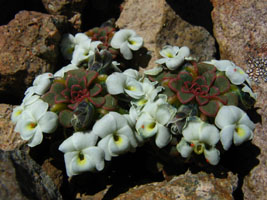 |
| Viola sacculus |
|
| |
|
| Many
of the violas are found locally, even confined
to one mountain, but Viola cotyledon is the
commonest and has a wide geographical spread. We
saw it in a number of areas; the picture on the
right was taken on Volcan Batua Mahuida, looking
west to the volcanoes on the Chilean border.
|
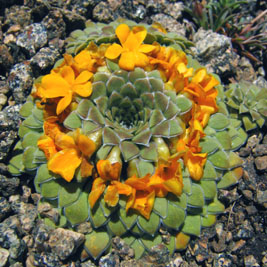 |
| Viola
coronifera |
|
| In contrast,
Viola coronifera, (left), is confined to
the 6000' mountain Cerro Colo Huincul
and its immediate surroundings. Although
there are several yellow rosulate
violas, this is the only one which we
saw. It was discovered just a few years
ago, and probably has been seen in the
wild by only about 100 people, including
the 18 in our expedition. |
|
|
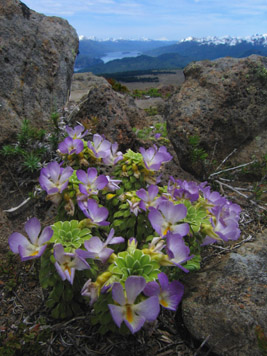 |
| Viola
cotyledon |
|
| |
|
|
|
| Viola
vulcanica disguises itself to look like a piece
of the local volcanic rock - see the picture on
the right - is this because birds fancy it ? Its
flowers are unspectacular, too, though in the
plant on the left they are still just emerging.
|
|
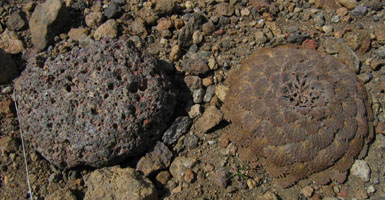 |
|
Viola
vulcanica |
|
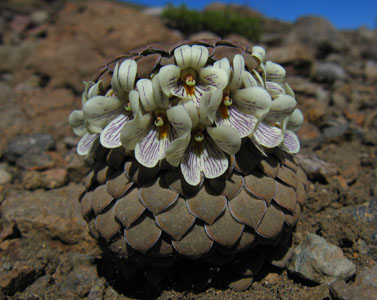 |
| Viola
columnaris |
|
| Both
Viola columnaris (left) and Viola dasyphylla
(right) are classified in Watson's paper as
belonging to the cotyledon group, though in
these pictures their habit is different, and it
is easy to see how V. columnaris gets its name.
|
|
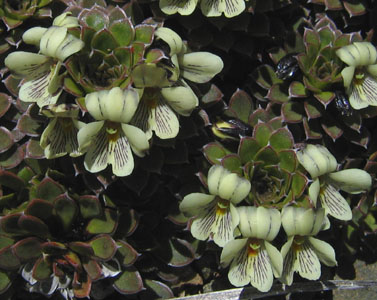 |
| Viola
dasyphylla |
|
| Finally,
one that (nearly) got away. In John
Watson's 1994 account, he describes it as
'elusively rare and very local', and says that
no-one has seen it since its original
discovery by Comber. It has of course now been
located again, but the Birks were very happy
to be able to locate it again this year.
Rosulate
violas have been grown in captivity, and
appeared on the show bench. We haven't tried,
but they are and will be a worthy challenge
for anyone now and in the future. |
|
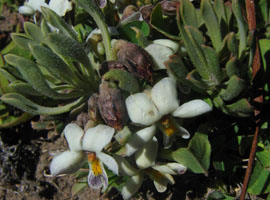 |
| Viola
escondidanensis |
|
|
|
